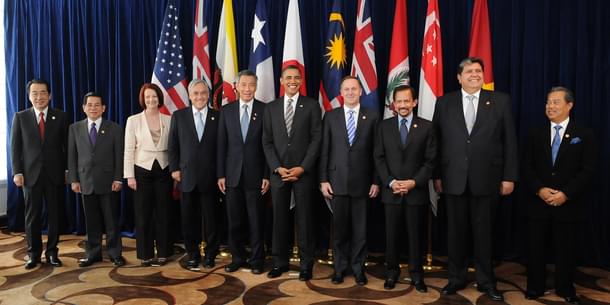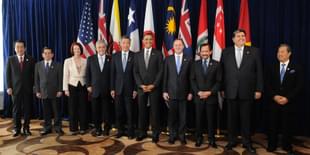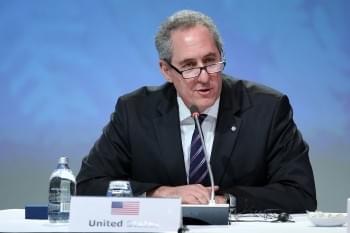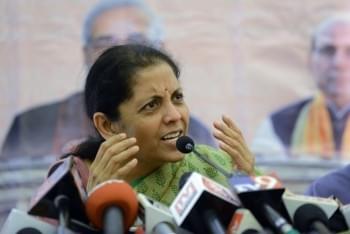Economy
TPP Is A Negative Sum Game For India, What Are Our Options?
Seetha
Feb 05, 2016, 05:48 PM | Updated Feb 22, 2016, 03:46 PM IST
Save & read from anywhere!
Bookmark stories for easy access on any device or the Swarajya app.


India can’t ignore TPP fallout; domestic policy must address the challenge. Economy wide reforms are needed to address trade challenges.
So, the Trans-Pacific Partnership (TPP) – the mega regional trade pact that is going to shake up global trade – has been signed into existence by its 12 member countries. It will come into effect once all of them ratify it, which could take at least up to two years.
The TPP is one of the three mega-regionals that are in various stages of being finalised, the other two being the Transatlantic Trade and Investment Partnership (TTIP) and the Regional Comprehensive Economic Partnership (RCEP). India is a member of RCEP.

How worried should India be? Very worried, says a just-released volume, TPP and India: Implications of Mega Regions for Developing Economies edited by Harsha Vardhana Singh. With TPP and TTIP in place, the book says, India’s real GDP could be 3.44 percent lower in 2030 than it would have been in the absence of these trade pacts. China is the next big loser – its GDP will be lower by 2.47 per cent.
But the World Bank’s Global Economic Prospects released in January 2016 says India will lose only 0.2 percent of GDP and China a little less than by 2030. Among the non-members of TPP, it expects Thailand and Korea to be the worst-hit.
Singh’s paper shows that five of India’s top 20 export destinations are TPP members (United States, Singapore, Vietnam, Malaysia and Japan). Among these five, the US is the largest, accounting for 53.5 per cent of India’s exports to TPP countries in 2014-15 (The 12 TPP countries together accounted for a quarter of India’s exports in 2014-15). But Singh argues that overall, tariff reductions under TPP will have a relatively small impact on India’s exports (except in the case of some products). Commerce minister Nirmala Sitharaman, speaking at the book release function, said the products most affected will be leather goods, plastic, chemicals and textile and clothing.

But TPP isn’t just about tariff reductions and border regulations. It covers a lot of non-trade issues – labour standards, environmental standards, regulatory requirements, intellectual property rights, requirements on manufacturing processes. These, says Singh, will influence trade diversion much more.
And apart from trade diversion, there will also be foreign investment diversion away from non-members to members. Again, it will be these various standards and regulations that will hugely influence investment flows, given the growing importance of global value chains (where parts of a finished product are sourced from different countries, almost like a global assembly line).
The introduction to the book points out that the reach of TPP would be wider than just the markets covered by it, not just because new members are likely to join but because the value chains of large manufacturing firms in TPP countries extend to many non-members as well. “With the close link between FDI and value chains, the reach of standards of TPP will expand also through FDI from companies from TPP economies.”
So, what can India do?
One response is to continue investing in the multilateral trade order represented by the World Trade Organisation (WTO), because there is always strength in numbers; bilateral and plurilateral negotiations will be weighted in favour of economies with more muscle power. Sitharaman said that every PTA/FTA/RTA (preferential, free and regional trade agreement) will eventually have to be subsumed in the WTO framework.
But it isn’t as easy as it looks. The advanced economies are already making attempts to make non-trade issues part of the WTO framework. In fact, the TPP is their response to the failure to get these WTO-plus issues on to the negotiating table at the multilateral forum because of strong resistance from the developing countries. If the TPP does get subsumed within the WTO, will these issues suddenly be dropped? Or will they make a back door entry into the WTO? Let’s not forget that these 12 countries account for 40 percent of world GDP and a quarter of world trade.
India can continue negotiating other bilateral, regional and plurilateral trade agreements. But will this insulate it from the effects of TPP? Seven of the RCEP members are members of the TPP as well, while an eighth – South Korea – has applied for membership. India is in advanced stages of negotiating FTAs with Australia and Canada, two TPP members. Will their membership of TPP not influence their negotiations with India? Or have an impact on trade and investment links with India?
There is a growing opinion, even within the country, that India should join the TPP, for it will lose out otherwise. Speaking at the book release function, former commerce secretary Rajeev Kher said that when he was a joint secretary in the commerce ministry, he was summoned to the highest office of the government – a clear reference to Prime Minister Manmohan Singh – and asked testily why India was not part of the TPP negotiations. His reply – that’s not even an option right now. Because India is nowhere remotely close to the standards and regulations that TPP would require it to adhere to. Raising domestic capacity to that level will require enormous time and resources.
There is, of course, the issue of whether joining TPP is in India’s interests at all, given how it will restrict domestic policy space on the entire range of non-trade issues because of the standards and regulations it will have to adhere to. Politically, this will be an extremely difficult sell.
There is another view that all these scenarios are needlessly alarmist, that there is a chance TPP may not materialise at all and that India need not do anything. But this ostrich approach will not do. Those holding this view kept insisting TPP would not get off the ground; today it has been signed into existence.
TPP is a done deal and India is far more closely integrated with the global economy than it once was to ignore it. Kher and economist Rajiv Kumar made a strong pitch for India actively working to be part of global value chains. An essay by Singh in the book shows that India is already part of this to an extent – the domestic value-added content of exports was 78 per cent in 2009, 12 percentage points lower than in 1995.
But the issue of global value chains comes later. The first issue to be dealt with is the competitiveness of Indian exports. Why does India have only 1.7 percent share in world exports, more than 10 years after former commerce minister Murasoli Maran targeted a 2 percent share? Why is India currently seeing 13 straight months of export decline when other comparable economies are posting positive growth even during a global trade slowdown?
Competitiveness is not about interest subventions and other sundry sops. It is about cumbersome customs procedures and the lack of physical infrastructure. India’s agricultural products are highly competitive at the farm gate; by the time they reach ports they become hugely uncompetitive. It costs more and also takes more time to move goods from Noida to Mumbai than to ship them from there to a foreign port. There are economic reforms – labour law reforms, for example – that are needed for their own sake.
Trade policy is not something that the commerce ministry alone should be saddled with. The last export policy dealt with some of these issues, but these issues need to get far more mind space in the government. TPP or no TPP, these are issues India needs to address and act upon. Unilateral action based on domestic concerns will put India on a stronger footing and is far better than having to do so out of compulsion. It may even help mitigate some of the negative effects of TPP.
Seetha is a senior journalist and author





